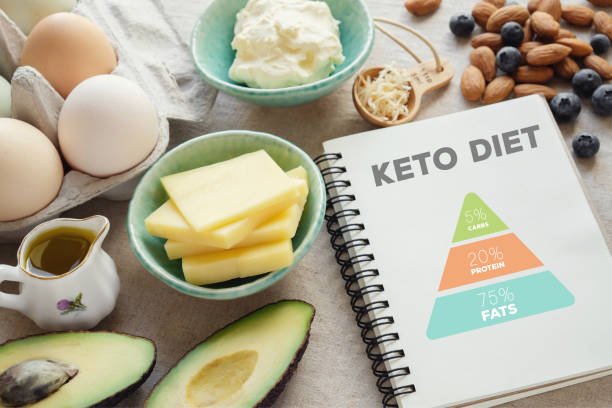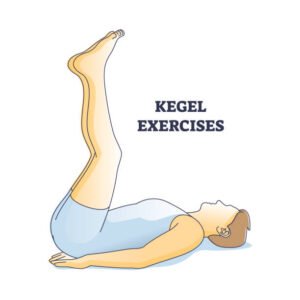The Ultimate Guide to the Keto Diet: Benefits, Meal Plans, and Tips for Success
The keto diet has taken the health and wellness world by storm, and for good reason. This low-carb, high-fat diet has been praised for its ability to promote weight loss, boost energy levels, and improve overall health. Whether you’re a beginner or someone looking to refine your keto lifestyle, this guide will provide you with everything you need to know about the keto diet, including its benefits, meal plans, and tips for success.

What is the Keto Diet?
The ketogenic or keto diet is a low-carbohydrate, high-fat eating plan designed to shift your body into a state of ketosis. Ketosis is a metabolic state where your body burns fat for fuel instead of carbohydrates. By drastically reducing your carb intake and increasing your fat consumption, your body produces ketones, which are used as an alternative energy source.
How Does the Keto Diet Work?
When you consume fewer carbs, your body’s glycogen stores become depleted. As a result, your liver starts converting fat into ketones, which serve as fuel for your brain and muscles. This process not only helps you burn fat more efficiently but also stabilizes blood sugar levels and reduces hunger cravings.
Benefits of the Keto Diet
- Weight Loss
One of the most popular reasons people try the keto diet is for weight loss. By burning fat for energy, your body becomes a fat-burning machine, helping you shed excess pounds quickly and effectively. - Improved Mental Clarity
Many keto dieters report enhanced focus and mental clarity. Ketones are a more efficient fuel source for the brain, which can lead to improved cognitive function. - Stable Energy Levels
Unlike the energy spikes and crashes associated with high-carb diets, the keto diet provides a steady supply of energy throughout the day. - Better Blood Sugar Control
The keto diet can help regulate blood sugar levels, making it an excellent option for individuals with type 2 diabetes or insulin resistance. - Reduced Inflammation
A low-carb, high-fat diet has been shown to reduce inflammation, which is linked to numerous chronic diseases.
Getting Started with the Keto Diet
1. Calculate Your Macros
To achieve ketosis, you’ll need to follow a specific macronutrient ratio:
- 70-75% of calories from fat
- 20-25% of calories from protein
- 5-10% of calories from carbohydrates
Use an online keto calculator to determine your daily macro needs based on your age, weight, activity level, and goals.
2. Stock Up on Keto-Friendly Foods
Focus on whole, nutrient-dense foods that align with the keto diet:
- Fats: Avocado, olive oil, coconut oil, butter, and nuts
- Proteins: Eggs, fatty fish, chicken, beef, and tofu
- Low-Carb Veggies: Spinach, kale, broccoli, and zucchini
- Dairy: Cheese, heavy cream, and Greek yogurt
Avoid high-carb foods like bread, pasta, rice, and sugary snacks.
3. Plan Your Meals
Meal planning is key to staying on track with the keto diet. Here’s a sample 7-day keto meal plan to get you started:
Day 1:
- Breakfast: Scrambled eggs with spinach and avocado
- Lunch: Grilled chicken salad with olive oil dressing
- Dinner: Salmon with asparagus and butter
Day 2:
- Breakfast: Keto smoothie with almond milk, spinach, and chia seeds
- Lunch: Zucchini noodles with pesto and grilled shrimp
- Dinner: Beef stir-fry with broccoli and sesame oil
Day 3:
- Breakfast: Keto pancakes with sugar-free syrup
- Lunch: Tuna salad with mayo and celery
- Dinner: Pork chops with cauliflower mash
Day 4:
- Breakfast: Greek yogurt with nuts and seeds
- Lunch: Cobb salad with bacon, avocado, and blue cheese
- Dinner: Chicken thighs with roasted Brussels sprouts
Day 5:
- Breakfast: Omelet with cheese, mushrooms, and spinach
- Lunch: Lettuce-wrapped burgers with avocado
- Dinner: Shrimp scampi with zucchini noodles
Day 6:
- Breakfast: Chia pudding with coconut milk and berries
- Lunch: Grilled salmon with a side of sautéed greens
- Dinner: Steak with garlic butter and green beans
Day 7:
- Breakfast: Keto muffins with almond flour
- Lunch: Chicken Caesar salad (no croutons)
- Dinner: Lamb chops with roasted cauliflower
Tips for Success on the Keto Diet
- Stay Hydrated
The keto diet can cause dehydration, so it’s essential to drink plenty of water throughout the day. - Electrolytes Are Key
When you cut carbs, your body excretes more electrolytes. Supplement with sodium, potassium, and magnesium to avoid the “keto flu.” - Track Your Progress
Use a food diary or app to monitor your carb intake and ensure you’re staying within your macros. - Be Patient
It can take a few days to a week for your body to enter ketosis. Don’t get discouraged if you don’t see immediate results. - Experiment with Recipes
Keep your meals exciting by trying new keto-friendly recipes. From keto pizza to fat bombs, there’s no shortage of delicious options.
Common Mistakes to Avoid
- Not Eating Enough Fat
Fat is the cornerstone of the keto diet. If you’re not consuming enough, you may struggle to reach ketosis. - Overeating Protein
While protein is important, consuming too much can kick you out of ketosis. Stick to moderate protein intake. - Ignoring Hidden Carbs
Be mindful of hidden carbs in sauces, dressings, and processed foods. Always read labels carefully. - Giving Up Too Soon
The transition to keto can be challenging, but the benefits are worth it. Stick with it, and you’ll soon reap the rewards.
Frequently Asked Questions
1. Can I exercise on the keto diet?
Yes, exercise is encouraged on the keto diet. However, you may experience a temporary drop in performance as your body adapts to burning fat for fuel.
2. Is the keto diet safe for everyone?
While the keto diet is safe for most people, it’s not suitable for individuals with certain medical conditions, such as pancreatitis or liver disease. Consult your doctor before starting.
3. How long should I stay on the keto diet?
The duration of the keto diet depends on your goals. Some people follow it short-term for weight loss, while others adopt it as a long-term lifestyle.
4. What are the side effects of the keto diet?
Common side effects include the “keto flu,” which may cause headaches, fatigue, and irritability. These symptoms typically subside within a week.
Conclusion
The keto diet is a powerful tool for weight loss, improved health, and enhanced energy levels. By understanding how it works, planning your meals, and following expert tips, you can successfully incorporate the keto diet into your lifestyle. Whether you’re a beginner or a seasoned keto enthusiast, this guide provides the knowledge and resources you need to thrive on your keto journey.







